-
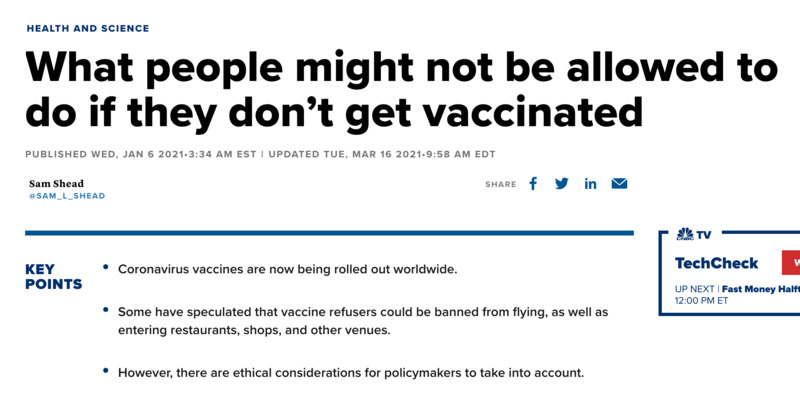
2021-01-06
This is an article going over some things you may not be allowed to do without the vaccine. This includes going to big events and being in large crowds.
-
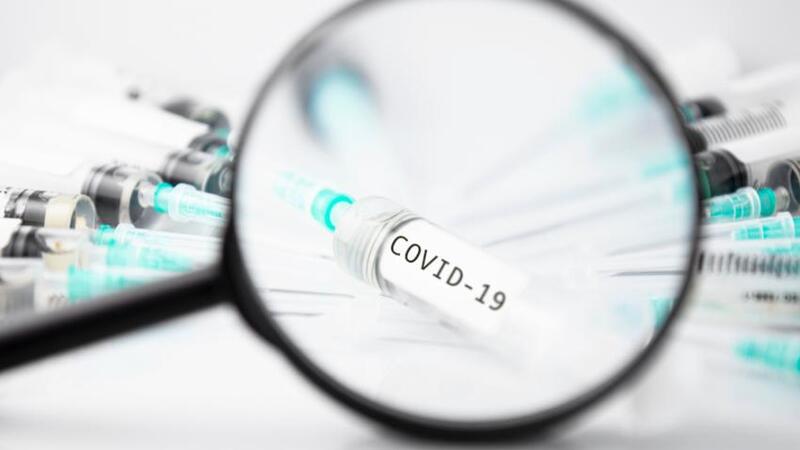
2020-12-23
This is an article going over some myths and facts about the vaccine. This is to help those who are skeptic on certain things about the vaccine.
-

2020-01-01
This is the official CDC website and it explains everything about the vaccine including talk about who should, and should not, get the vaccine. This includes factors such as your health status, age, and more.
-
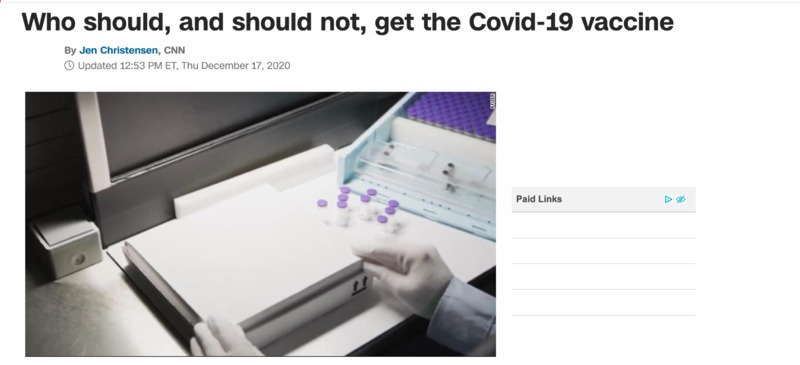
2020-12-17
This article just explains who should, and should not, be getting the vaccine. This depends on your health status and other issues such as vaccine allergies.
-
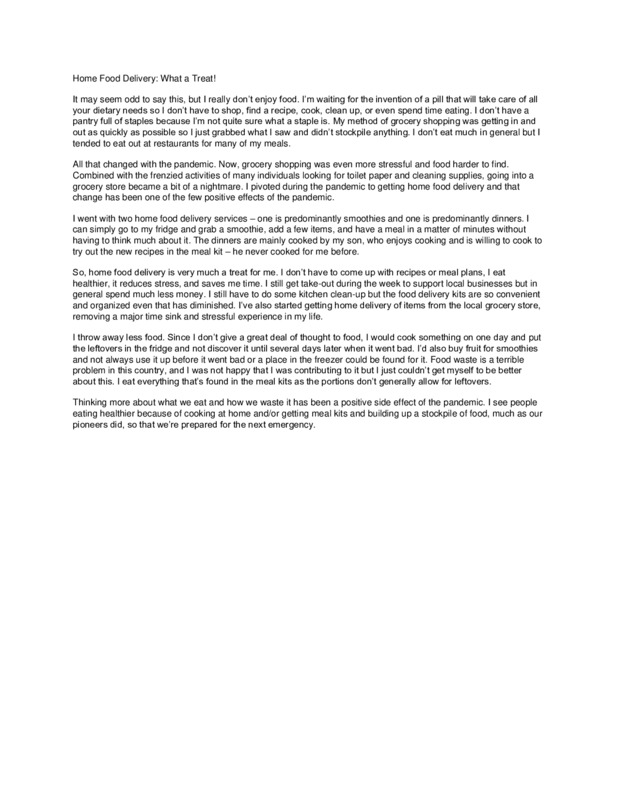
2021-01-24
One of the most basic survival needs is food, so when the pandemic hit many individuals were struggling to meet this need with the changed food landscape. Restaurants were closing, grocery stores had restricted supplies, going grocery shopping could be dangerous in terms of exposure to the virus and exposure to people fighting over items, and many people weren’t in the habit of cooking at home every day. So this most basic of needs underwent significant shifts due to the pandemic. I dislike shopping, cooking, looking up a recipe, cleaning up the kitchen, and even eating. So I tend to eat out quite a bit. I pivoted during the pandemic to getting home food delivery and that change has been one of the few positive effects of the pandemic. It saves me time, reduces stress, and improves my health because of the healthy food choices.
-
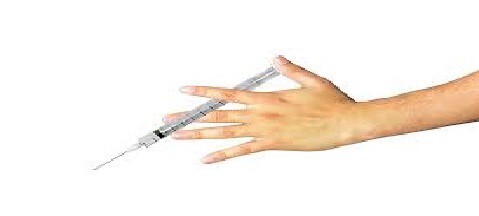
2020-08-28
This is a doctors blog and she is explaining why she will not be getting the COVID19 vaccine. He believes it was produced too fast and that it was a political scandal and he does not trust it.
-
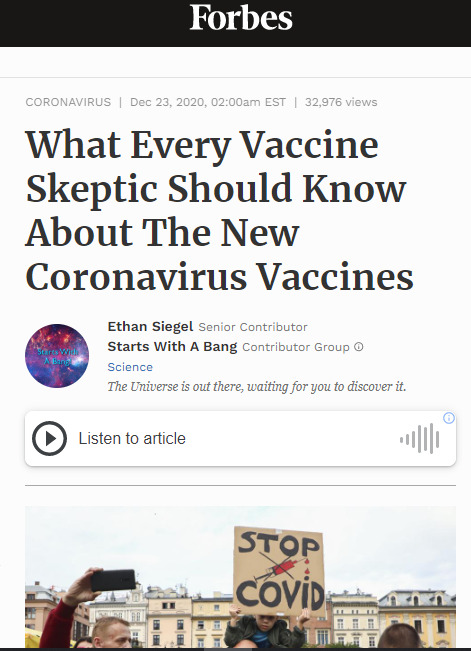
2020-12-23
This article explains what is in the vaccine, why it is unique/safe compared to other vaccines, and also explains the side effects of the vaccine.
-

2021-01-24
When COVID-19 started affecting Kansas City, little changed at first. We wore masks, used hand sanitizer, etc., but life went on as normal otherwise. As the virus progressed, we closed our offices and I started working from home. One of my pre-COVID rituals was a trip to Broadway Cafe close to my house for a great latte or macchiato. At least this ritual was still intact. Then, the coffee shops all closed. It sounds silly to say this affected me even more than going into the office. It was my normal routine for so many years though...that a trip to the coffee shop served as an anchor for feeling life would go on, regardless of how far the virus progressed.
The audio file attached is my espresso machine at home. I now buy coffee beans for the house, grind them, and pour shots of espresso to drink straight or craft into a macchiato or latte. The sound of my machine grinding beans, pressing the grounds into a puck, and then pouring into shot glasses still did not replace the coffee shop, but it did become an anchor to help me adjust when I needed it most.
Today, our coffee shops are open for pickup service. Between that and still pouring my own at home, using their beans, life is good. I look forward to a post-COVID world where the local roasters and coffee shops continue to play an important role in my personal sense of normalcy and the social health of our collective neighborhoods.
-
2020-12-25
Holidays have never been particularly important in my family. Most holidays would end in a fight between me and my mother so the lack of family interaction wasn't really a big deal for me. My mom ended up driving down from California to spend time with my grandmother and me. These holidays ended up being good as my mom and I got along better. It seems as though without the pressure for the holidays to be fully good my mom and I were able to let go and just enjoy being around each other.
-
2021-01-14
I work at the Beth Israel Deaconess Medical Center in Boston, MA. My role is usually in education with a background in pre-hospital emergency medicine. Because of my background as a paramedic, I was asked to work in the vaccine clinic for the hospital staff as an observer. My position was to keep an eye on the hospital staff for 15 minutes after they received their Covid vaccine, just in case there were any reactions. Thankfully, my shifts have been very uneventful due to the safety of the vaccine. It was fascinating to talk with the staff when they came back for their second dose, as I was given insight into their experiences with the first dose. This meant that when I went in for my first dose in mid-January, I fully knew what to expect. I received the Moderna vaccine. About four hours after getting the shot, my arm felt quite sore. By the night of the vaccine, my shoulder was throbbing, but it was manageable. For the price of some shoulder pain, the opportunity to receive the shot during the first wave was well worth the discomfort. I get my second dose in early February, so I will see then if I feel as crummy as some of my friends and co-workers have after the second dose.
-

2020-08-09
I have been a home gardener for a few years now, and love to cook using the things from my garden. When Covid started to hit the US in late February/early March, the resulting panic resulted in widespread shortages in the grocery stores for many common items of American households. News reports consistently told us that food supply networks were in jeapordy. I had never grown potatoes before (though I have grown sweet potatoes), but I decided that for its nutritional value to space ratio, it would be worth growing potatoes this year. Thankfully, the media had seemingly overblown the shortage problem (at least in my area), but that didn't matter because I enjoyed growing potatoes and had a great harvest. My first dish I made with my homegrown potatoes (and homegrown carrots) was a delishous pot roast. I was able to include a glass of y homebrewed beer to complete the meal. Sitting down for this meal was certainly a bright spot during the pandemic and was the culmination of several months of labor and enjoyment.
-

2021-01-24
Israel is leading the vaccine rollout by a decent margin, with the United Arab Emirates close behind. Indeed, Israel hopes to have most of the population vaccinated by March. The advances in the vaccine rollout in these countries are an excellent chance to review the success rates in a larger population pool. There are many reasons for the success of Israel's rollout, including advance planning, an efficient healthcare system, and methodical shipping, storage, and distribution.
-
2021-01-24
As of today, there have been no deaths attributed to the vaccine and only 10 reported cases of severe reactions to it.
-
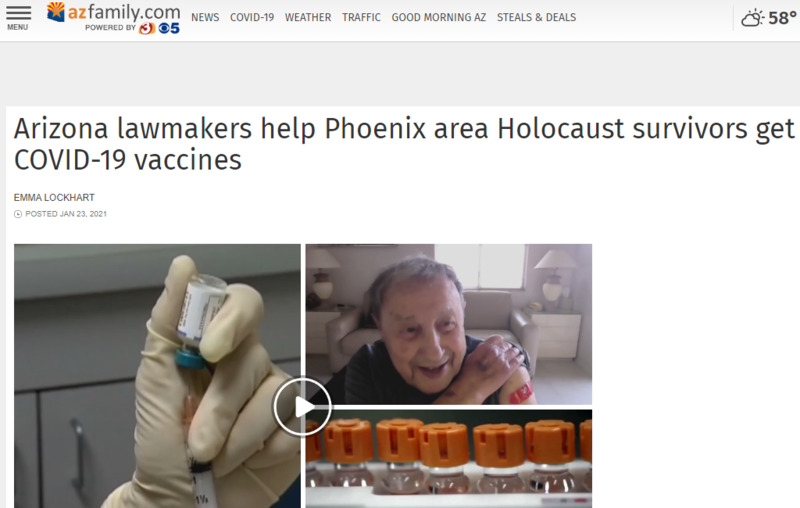
2021-01-24
97-year-old Alexander White, a Holocaust survivor, got a vaccine with a push from Arizona lawmakers.
-
2021-01-24
Many people are concerned with the symptoms that come with the vaccines and if they differ depending on which vaccine. Some of the common symptoms of both the Pfizer and Moderna vaccines are:
i. injection site pain
ii. tiredness
iii. headache
iv. muscle pain
v. chills
vi. joint pain
vii. fever
viii. injection site redness or swelling
ix. nausea
x. feeling unwell
xi. swollen lymph nodes.
Bibliography:
“Highlighted Infectious Diseases for Arizona.” n.d. Arizona Department of Health Services. az.gov. Accessed January 24, 2021. https://www.azdhs.gov/preparedness/epidemiology-disease-control/infectious-disease-epidemiology/index.php?utm_source=google_grant&utm_medium=cpc&utm_campaign=covid19&utm_term=covid#novel-coronavirus-faqs.
CDC. 2020. “Coronavirus Disease 2019 (COVID-19).” Centers for Disease Control and Prevention. February 11, 2020. https://www.cdc.gov/coronavirus/2019-ncov/vaccines/different-vaccines/how-they-work.html?CDC_AA_refVal=https%3A%2F%2Fwww.cdc.gov%2Fcoronavirus%2F2019-ncov%2Fvaccines%2Fabout-vaccines%2Fhow-they-work.html.
-
2021-01-24
1. Pfizer, mRNA vaccine – manufactured by Pfizer and BioNTech, offered across the U.S. in every state
2. Moderna, mRNA vaccine – manufactured by ModernaTX, offered across the U.S. in every state
Bibliography:
CDC. 2020. “Coronavirus Disease 2019 (COVID-19).” Centers for Disease Control and Prevention. February 11, 2020. https://www.cdc.gov/coronavirus/2019-ncov/vaccines/different-vaccines/how-they-work.html?CDC_AA_refVal=https%3A%2F%2Fwww.cdc.gov%2Fcoronavirus%2F2019-ncov%2Fvaccines%2Fabout-vaccines%2Fhow-they-work.html.
Calgary, Open. n.d. “COVID-19 Vaccine Distribution Allocations by Jurisdiction - Pfizer | Data | Centers for Disease Control and Prevention.” Data.cdc.gov. Accessed January 25, 2021. https://data.cdc.gov/Vaccinations/COVID-19-Vaccine-Distribution-Allocations-by-Juris/saz5-9hgg.
-
2021-01-24
There are a couple of reasons as to why there are different forms of not only the COVID-19 vaccine but of vaccines in general. This is because not much is understood about the COVID-19 virus, so there are multiple vaccines in trial or tested in order to provide as much of a range of protection as possible
The two main vaccines use mRNA, which is still relatively new but effective, but the vector vaccines have been used since the 1970s to treat viral diseases
Bibliography:
CDC. 2020. “Coronavirus Disease 2019 (COVID-19).” Centers for Disease Control and Prevention. February 11, 2020. https://www.cdc.gov/coronavirus/2019-ncov/vaccines/different-vaccines/how-they-work.html?CDC_AA_refVal=https%3A%2F%2Fwww.cdc.gov%2Fcoronavirus%2F2019-ncov%2Fvaccines%2Fabout-vaccines%2Fhow-they-work.html.
“Covid-19 Vaccine Frequently Asked Questions.” 2021. New England Journal of Medicine. 2021. https://www.nejm.org/covid-vaccine/faq?cid=DM108101_&bid=351587577.
-
2021-01-24
There are 3 types of vaccines that are or will be available in the U.S.
1. mRNA: uses part of the COVID-19 virus to create proteins in our bodies that our immune system can recognize and remember in order to fight the virus
2. Protein subunit: has pieces of the proteins that the COVID-19 vaccine uses (not the actual virus) that the body will recognize in the future that do not belong in the body
3. Vector: injection of a weakened but live virus that has the genetic material that causes COVID-19 (a vector virus) that will cause the body to make the proteins that cause COVID-19 and force the immune system to remember that protein and fight it in the future
The two being offered across the U.S. right now are both mRNA vaccines that require 2 shots 21 days apart
Both vaccines are tested with a 95% effectivity, but that effectivity is only proven to be true after both doses are administered and there is not substantial long-term effect research yet
Bibliography:
CDC. 2020. “Coronavirus Disease 2019 (COVID-19).” Centers for Disease Control and Prevention. February 11, 2020. https://www.cdc.gov/coronavirus/2019-ncov/vaccines/different-vaccines/how-they-work.html?CDC_AA_refVal=https%3A%2F%2Fwww.cdc.gov%2Fcoronavirus%2F2019-ncov%2Fvaccines%2Fabout-vaccines%2Fhow-they-work.html.
“Covid-19 Vaccine Frequently Asked Questions.” 2021. New England Journal of Medicine. 2021. https://www.nejm.org/covid-vaccine/faq?cid=DM108101_&bid=351587577.
-
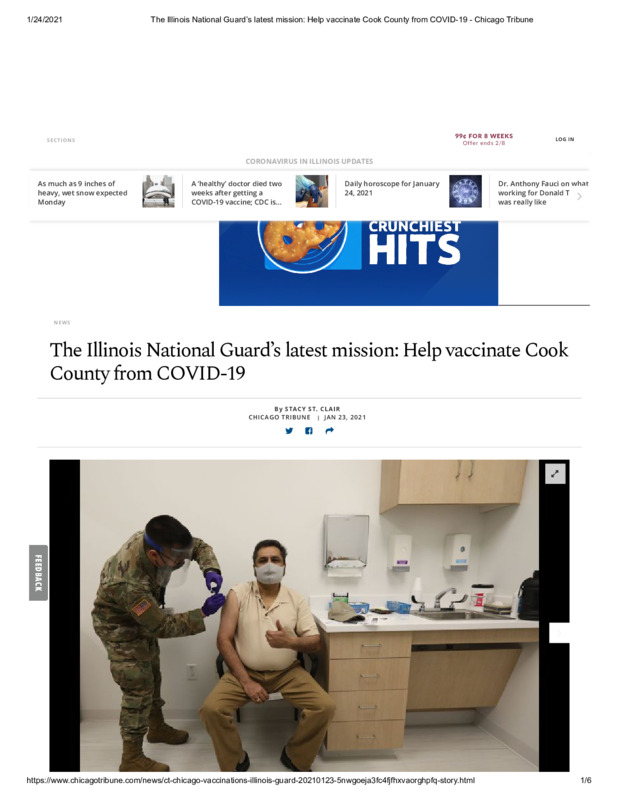
2021-01-23
The article highlights how the National Guard is both assisting in distributing COVID-19 vaccines, as well as combating potential skeptics' worry about the vaccines' effects.
-
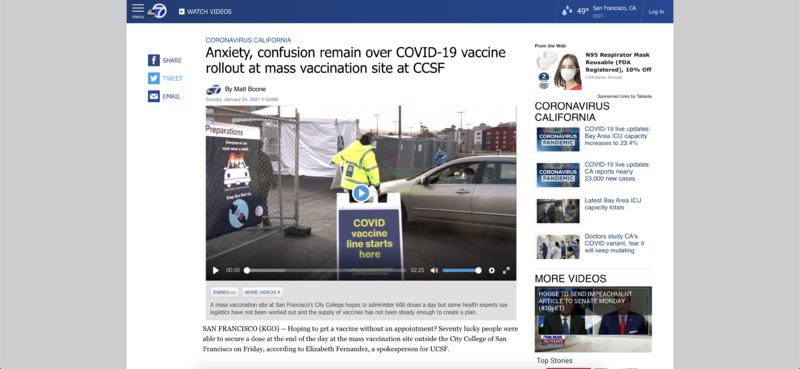
2021-01-24
This article discusses the confusion over how vaccines are being rolled out to eligible individuals in San Francisco. A vaccination site is allowing individuals to get vaccinated without an appointment if there are extra doses at the end of the day. However, while texts are being sent out to let people know they are eligible, without an appointment there is no guarantee they will receive a vaccine if they go to the site; this is leading to people arriving, hoping to receive one of the leftover doses, only to be turned away. This is just one example of how confusion and misinformation about the vaccine is leading to anxiety and disappointment, and a desperate sense of hope that the kinks will be worked out soon so that the vaccination process will improve.
-
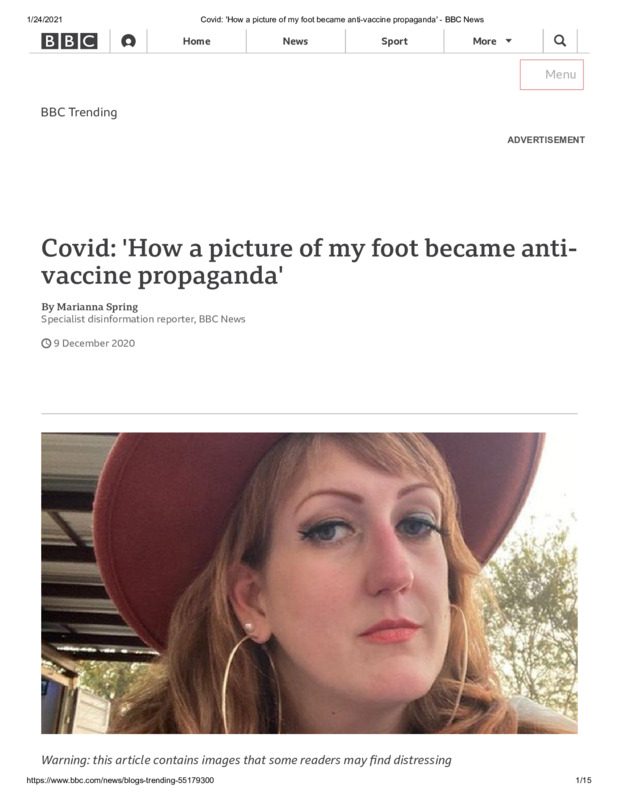
2020-12-09
A woman named Patricia developed severe blisters on her feet several days after receiving a placebo COVID-19 virus. While attempting to raise money for her medical bills, her story became twisted, causing it to spread across the internet that the vaccine had caused her new skin condition - even though this was not the case.
-

2020-12-15
The article addresses four of the main COVID-19 vaccine conspiracies as well as expert opinions about them.
-

2020-12-18
This article introduces motives behind those who join conspiracy theories revolving around the COVID-19 vaccine
-
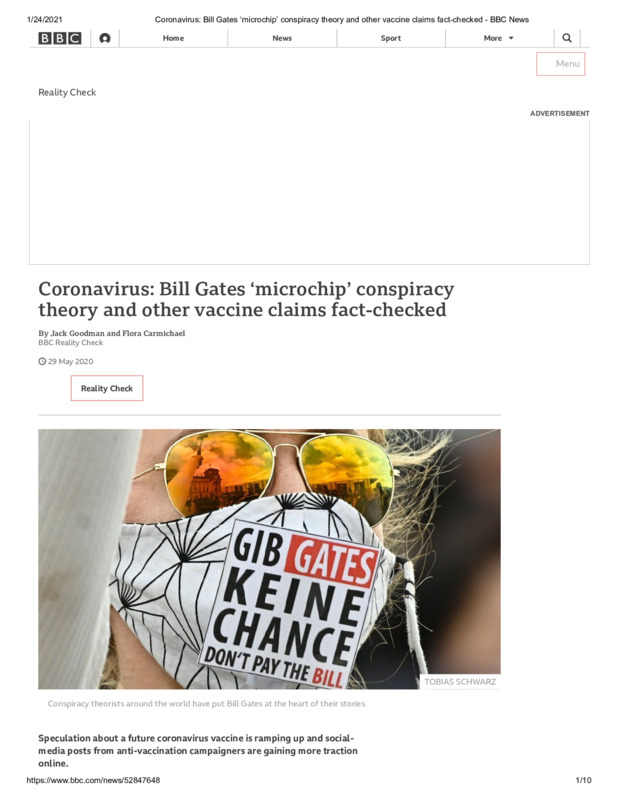
2020-05-29
This story specifically addresses and debunks the conspiracy theory that the coronavirus vaccine implants microchips into an individual's bloodstream, as well as some background ideas as to why conspiracy theories are prevalent and a rumored cow dung vaccine.
-
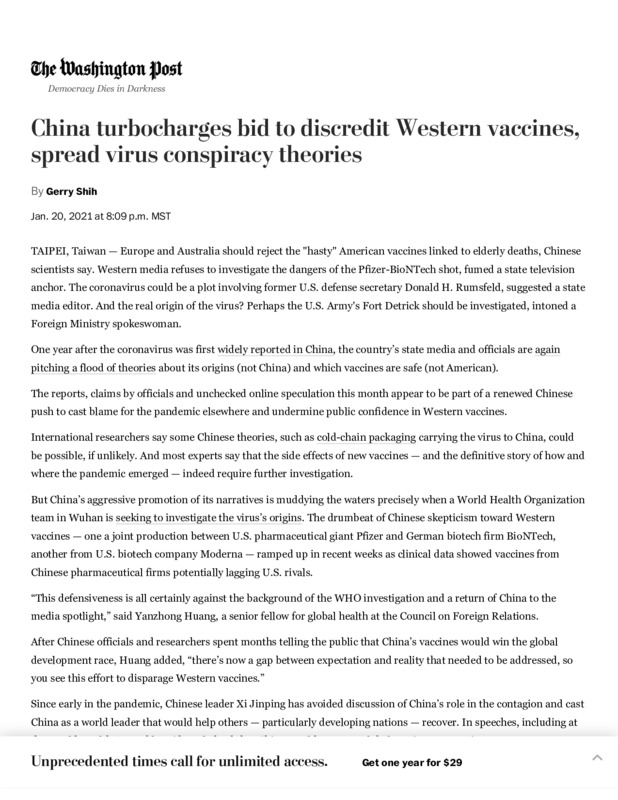
2021-01-20
A Washington Post article highlighting how the Chinese government is attempting to discredit the new COVID-19 vaccines since they themselves were unable to produce an effective vaccine as they claimed
-

2021-01-24
I was planning to go to London this year to present at an international conference of librarians and connect with librarians from all over the world. This conference is only held every three years, and it is an important forum to share thoughts, present ideas and projects, network and build international collaborations, and plan joint projects. Doing so through email and Zoom is a poor substitute for this type of one-on-one conference. I travel internationally frequently, and I was planning to fit in a trip to Ireland before the conference, to visit with the land of my ancestors. I’ve been involved in a genealogy project along with some of my relatives, and my trip to Ireland would have given me the opportunity to do some family research. When I travel, I travel very close to the ground: staying in small B&Bs or hotels, dining in local establishments, traveling by bus or rail, and really trying to fit into the community rather than be a tourist to the extent possible. International travel is so important for this divisive world these days to foster understanding and cooperation both personally and professionally. So the cancellation of my trip meant not only the loss of some fun times but also speaks to a greater loss.
-
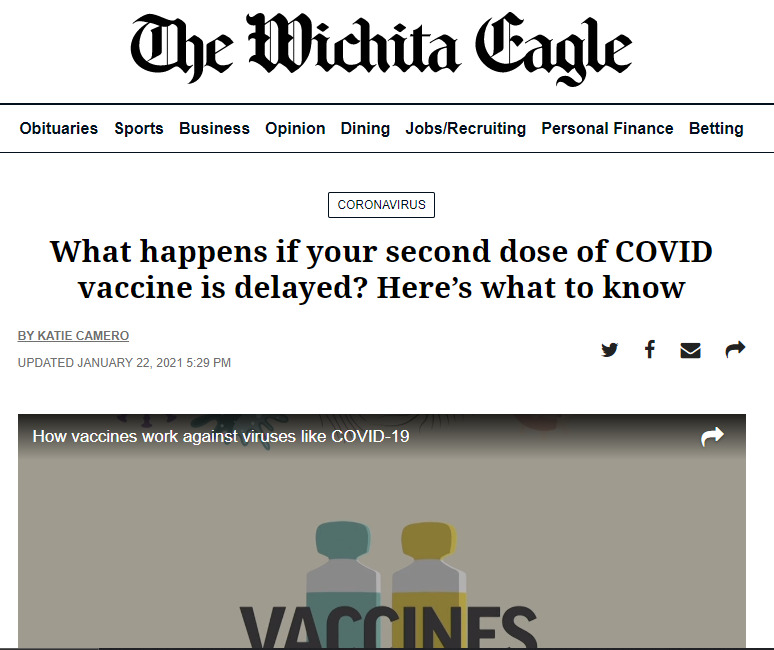
2021-01-18
In Wichita, Kansas, they gave all the doses they had with assurances that the second doses will arrive soon. However, as the date creeps up, the clinics haven’t received the second shipment later, and people are left wondering if they'll even be able to receive the second dose in the correct window of time.
-
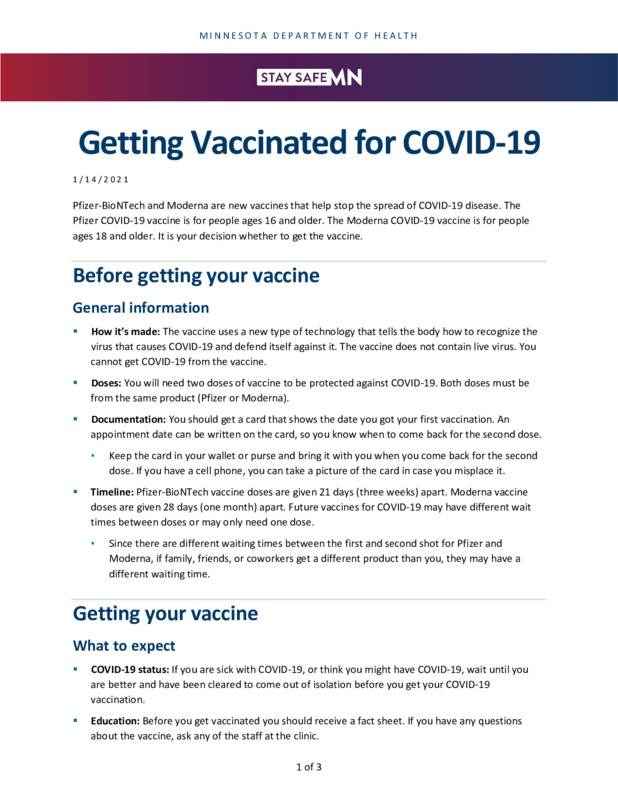
2021-01-20
Somebody who doesn’t work in the medical field might view this as a not so complicated process. But somebody planning how to distribute the vaccine to everyone in the community sees many challenges. Both Moderna and Pfizer vaccines require a second dose in a specific time period. One challenge presents itself with the homeless population, how to get them back for their second dose and within the required time period. Suggestions for solving this problem include giving free transportation and meals for the people receiving their vaccine, but there seems to be no easy answer. Some experts are trying to find a solution by educating and informing the public, hoping to ease fear and get people in for both doses.
-
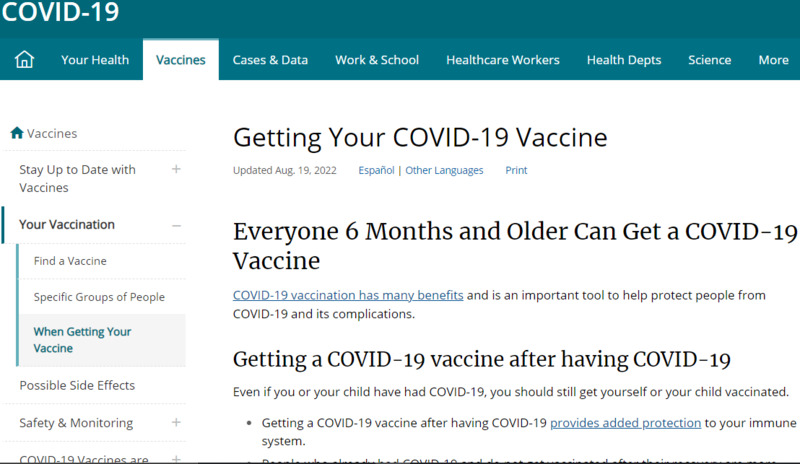
2021-01-23
The process of giving the COVID vaccine is not as simple as one may think. For starters, hospitals and clinics have no idea when they will receive the next shipment of doses since it is held and distributed by the state. Scheduling appointments for the general population is difficult without knowing when they’ll receive the next shipment. Then, the paperwork is extensive for each patient. And when a bottle is opened, all doses must be pulled up immediately and distributed within 15-45 minutes, leaving little room for mistakes or missed appointments. Via Christi in Manhattan, Kansas, USA is proud to say they have not wasted a single dose yet, unlike many other hospitals across the US. The patient then has to wait for 15 minutes to be observed by the hospital staff for reactions before they can leave. If this sounds like a lot for a patient, imagine the process for the hospital staff.
-
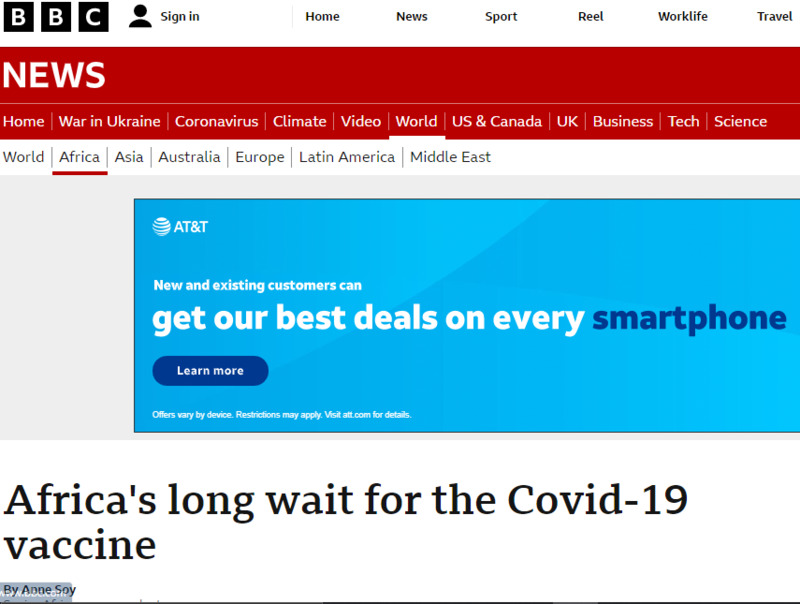
2021-01-23
Getting vaccines for lower to middle income countries is a challenge. Some experts believe up to 90% in low income countries will not receive the vaccine in 2021. It isn’t just buying the vaccine for them, it is transporting the vaccine safely. The vaccine is incredibly temperature-sensitive. The Moderna vaccine must be kept between -25°C and -15°C (-13°F and 5°F), while the Pfizer vaccine is minus 70°C! The answer for rural areas: solar-powered refrigeration. This “cold chain” of refrigerated vehicles may allow many areas in places like Africa to receive the vaccine. There are still complications and experts think up to 25% of the vaccines will still be wasted until the refrigerators are perfected.
-
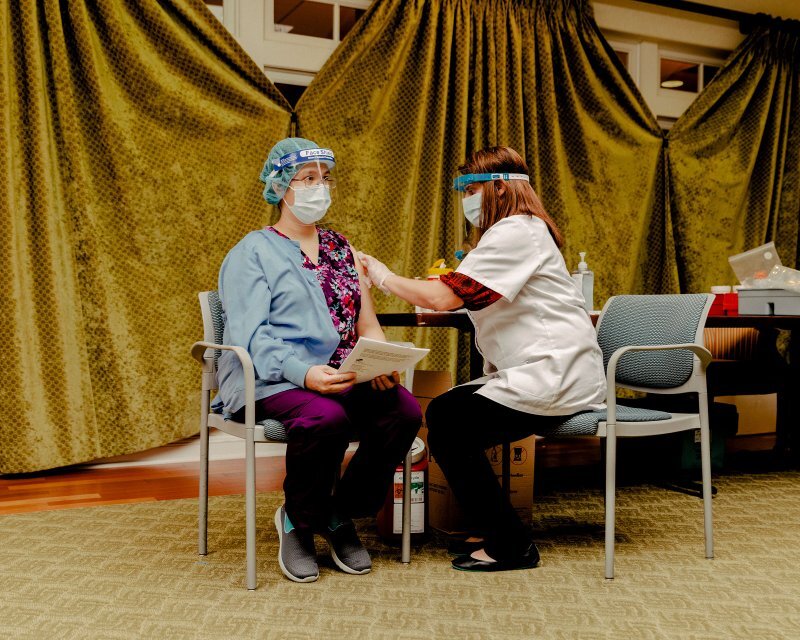
2021-01-22
People want the vaccine, and they want it now, but the process of clinics and hospitals giving the vaccine is a major process. To start, the vial must be pulled up all at once, and all five doses have to be given within a short time period, or they are ruined. Another complicated problem is the social distancing guidelines. Doctor’s offices are not generally large offices, and patients have to be there for at least fifteen minutes for observation, making drive thru vaccinations improbable. In addition, planning a day to give out vaccines is hard to do in advance, because medical centers have no idea when they will receive the vaccine. The state has control, and currently there seems to be insufficient communication and organization in many states.
-
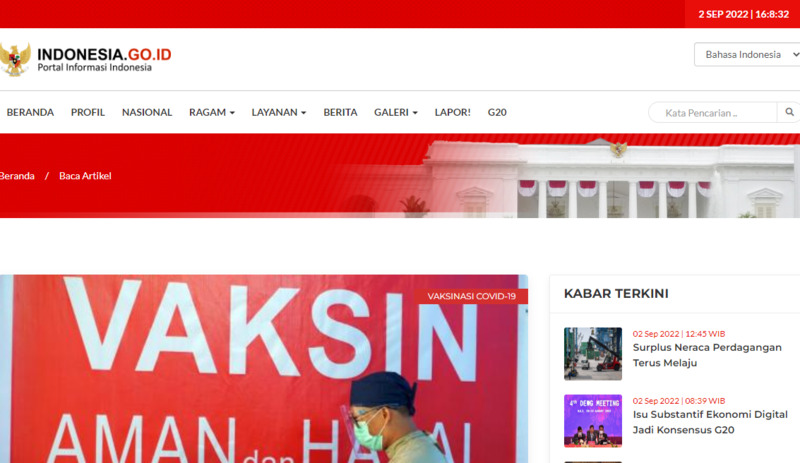
2021-01-24
Indonesians are being distributed a vaccine called "CoronaVac" from a biopharmaceutical company based in China called Sinovac Biotech. They are working with PT Biofarma, which is an Indonesian-based company of a similar nature.
On January 18, 2021, Dr. Siti Nadia Tarmizi from the Ministry of Health spoke publicly about the vaccine’s conditions. In accordance with the regulations set by the World Health Organization (WHO), certain conditions must be met before the vaccine can be administered. This article from the main Indonesian government website states nine of them. Among them are those who have not screened positive for COVID-19 or have been sick from COVID-19-like symptoms such as a runny nose or cough in the 7 days prior. This extends to those who are immuno-compromised, have cancer, and many similar illnesses. Pregnant women are also discouraged from getting the vaccine. There are more conditions listed, however I don’t entirely understand the potential medical jargon.
The article provided by IDN Times is more for this doctor’s credibility as she is one of the COVID-19 spokespersons for Indonesia. She is also the manager for the national AIDS division at the Ministry of Health in Indonesia.
These articles were personally translated.
-

2021-01-24
As of January 13, 2021, vaccinations have started its distribution across Indonesia — hitting 34 provinces. In light of this progress, it should also be noted that two (2) doses of the vaccine are recommended after a 14-day interval. A card will be issued to those who have had their first dose as well as a reminder for their second. The first article by Tirto concludes with instructions on what to do once the individual gets to the vaccination facility.
The second article by Kompas says the same information, but also includes the reason why two (2) doses are necessary in the first place.
These articles were personally translated.
-

2021-01-24
In hopes to raise awareness and rally more supporters of the vaccination, Indonesian President Joko Widodo made a public showing of him getting his first COVID-19 vaccination on January 13, 2021. The one administering the vaccination is the head doctor of the president’s medical team, Dr. Abdul Muthalib. As seen on the red banner behind the seated president, the text states that vaccination is safe and halal (safe for those practicing Islam).
These articles were personally translated.
-
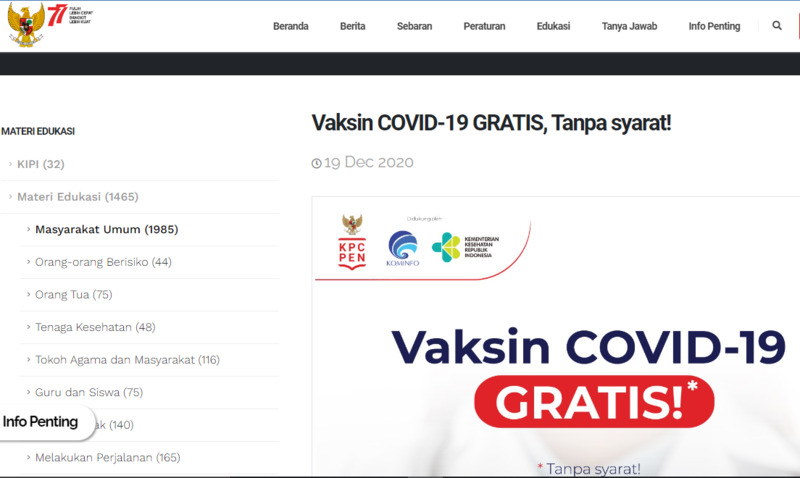
2021-01-24
Straight from the Indonesian COVID-19 website, it was published on December 19, 2020 that citizens would be given the vaccination for free and without any conditions. This goes for people who do and do not have health insurance. Since the vaccines hadn’t arrived yet at the date of publication, they also emphasized and encouraged that everyone should continue taking precautions (i.e. wearing masks, washing hands with soap).
In addition to this publication, Indonesian news source Kompas reported similarly the day prior. President Joko Widodo (through a representative) confirmed that the vaccine would be free for all Indonesian citizens. The Jakarta Post had also confirmed this information.
These articles were personally translated.
-
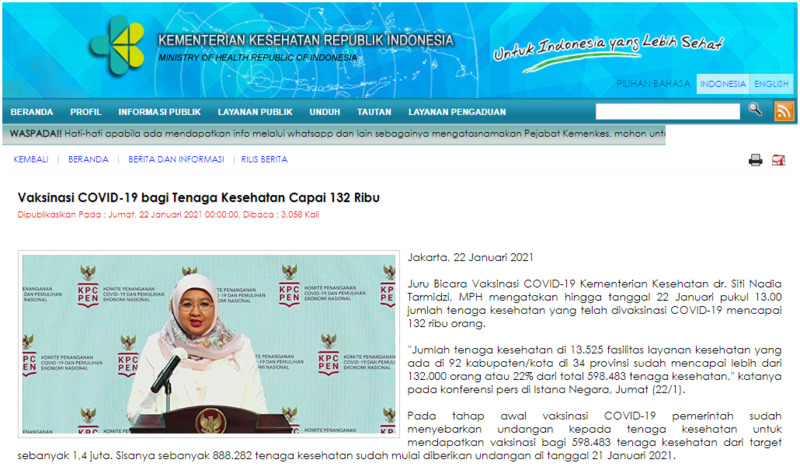
2021-01-24
It is of common knowledge to Indonesians that insurance is a luxury. This article, digitally published on January 24, 2021, by the Jakarta Post starts by saying that “a third of the population lacks health insurance.” The author goes on to describe the story of a family who had a diabetic relative. Government-funded as well as private medical facilities were not working quickly enough to provide the vaccination for them, and the hospitalization was becoming very costly for them.
Corroborating with the predicament, an article by the Ministry of Health claims that roughly 22% of a total of 598,483 health workers have been vaccinated (as of January 22, 2021). They’ve lost an estimation of 600 health workers thus far, and are trying to rally the support of the citizens to get through the pandemic through vaccination.
This article was personally translated.
-
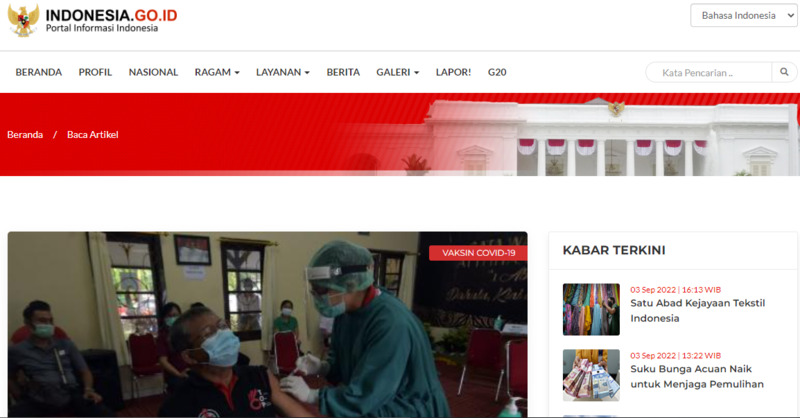
2021-01-24
In this Indonesian article on the main government website, they list out steps in which an individual can register to get themselves vaccinated. This article was digitally published on January 12, 2021, so the process is still ongoing. They provided four ways of registration: through a text message process when dialing *119#, through a phone application called “Pedulilindungi”, through the website http://pedulilindungi.id/ or through their local community officer. Furthermore, they did emphasize that their priority vaccinations, other than medical personnel, would include a numerous range of essential workers — such as the police, public transportation managers, and religious leaders.
Indonesian news source Kompas digitally published the same information a few days prior while including that the text messages would not be charged.
These articles were personally translated.
-
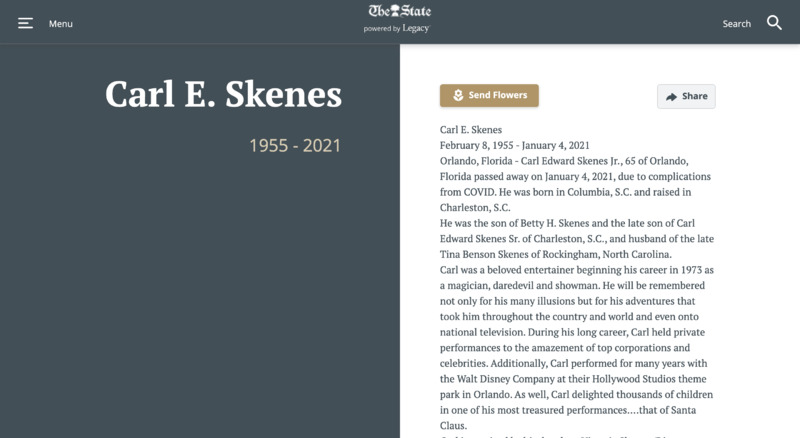
2021-01-18
Obituary of Carl E. Skenes The man was able to catch bullets in his mouth. what a savage.
-
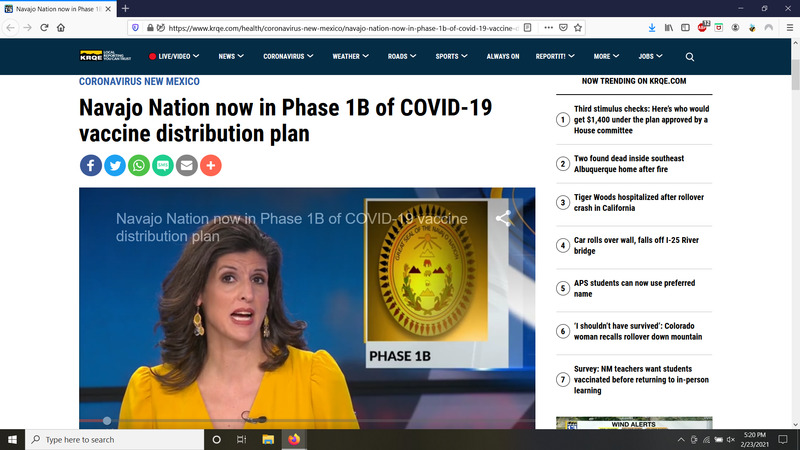
2021-01-21
(KRQE) Navajo Nation President Jonathan Nez urges the Federal government to continue the distribution of COVID vaccine to the Navajo Nation. Until then, the vaccine distribution plan will proceed into the next phase- focusing its efforts to provide vaccines to those who are 65 or older. According to Nez, over 70 percent of the vaccines issued by the Federal government have already been administered to the Navajo people.
-
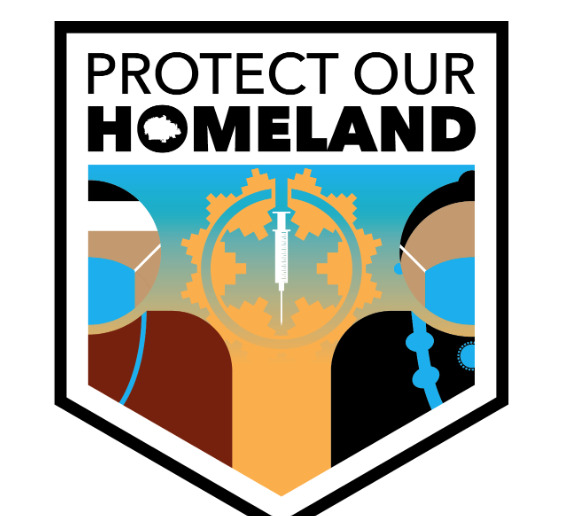
2021-01-22
Navajo Department of Health directive on Vaccine roll-out.
-
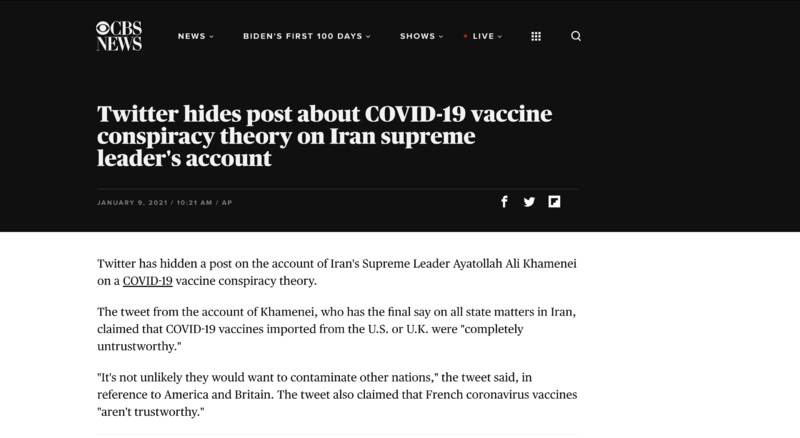
2021-01-09
Another COVID related regional tension. Interesting to watch geopolitical conflicts play out regionally in relation to COVID. As China, Iran, and Russia strengthen their alliance and control over central Asia.
-
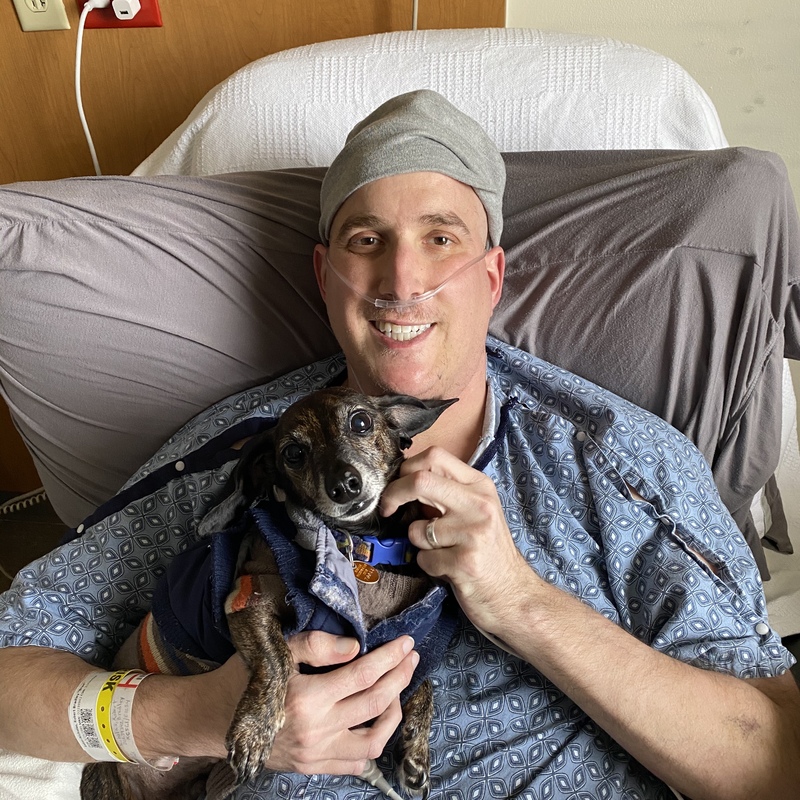
2020-01
The photo shows me and my dog while I was in the hospital doing chemotherapy for Testicular Cancer. By that point, I had been in the hospital for three weeks and we had got a prescription for me to be able to bring my dogs in order to cheer me up. My husband brought me our dogs Little Man (Miniature Dauschuand) and Lady (Whippet Terrier Mix). I was so happy to see them that I cried. The fur babies were so happy to see me that they just jumped on me and began licking me. This shows how lonely the covid-19 had made me and how the doctors were able to allow my furbabies to come to visit me which cheered me up.
-
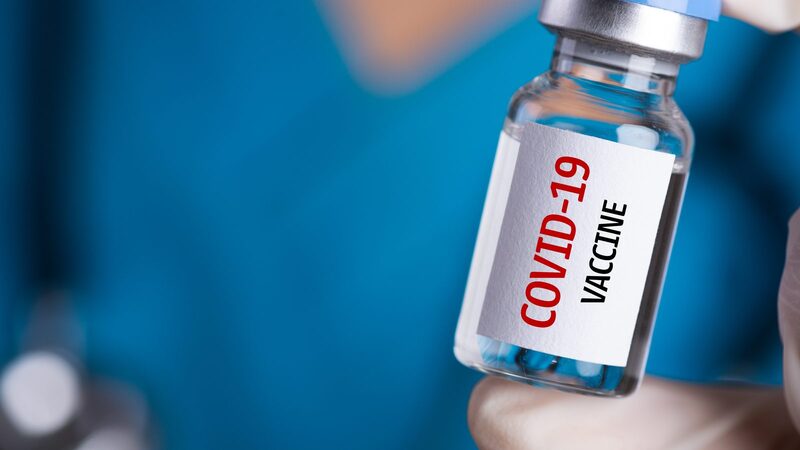
2021-01-23
I realized the seriousness of the pandemic when I began an exercise program on February 6, 2020. There was not much noise being made about the pandemic yet. I got my nails and hair done on February 11-12, 2020. I would realize now that this would be the last time since I have done this in a year. As the pandemic progressed things were places shutting down and I left my exercise program on February 28, 2020. I early voted on March 2, 2020, and wore a mask. Saw my dentist on March 4, 2020, and got my hair done one last time. By May, I went practically to my doctors and my general physician via telehealth, and then finally I realized this was very serious. People I know began to test positive for Covid. One of these people came into direct contact with me so as a result I went and got a Covid Test as a safety precaution. I found out it was negative. I began to not leave the house now due to the rising cases in my community in Florida. In August cases began to surge even more as people returned to school since summer was over. The holidays came in December and the numbers continued to grow and caused me to not leave the house anymore. This has been a terrible year of isolation and has caused me to lose many dear friends due to the pandemics of isolationism and people's change in attitudes. I am blessed to have a great spouse and a home with a bed to sleep in. I got vaccinated in January 2021. While this brings hope I have to figure out what I am to do and how to move forward as a result of the ongoing pandemic while I have to still maintain safety protocols. I hope the end is in sight due to there now being federal government oversight.
-
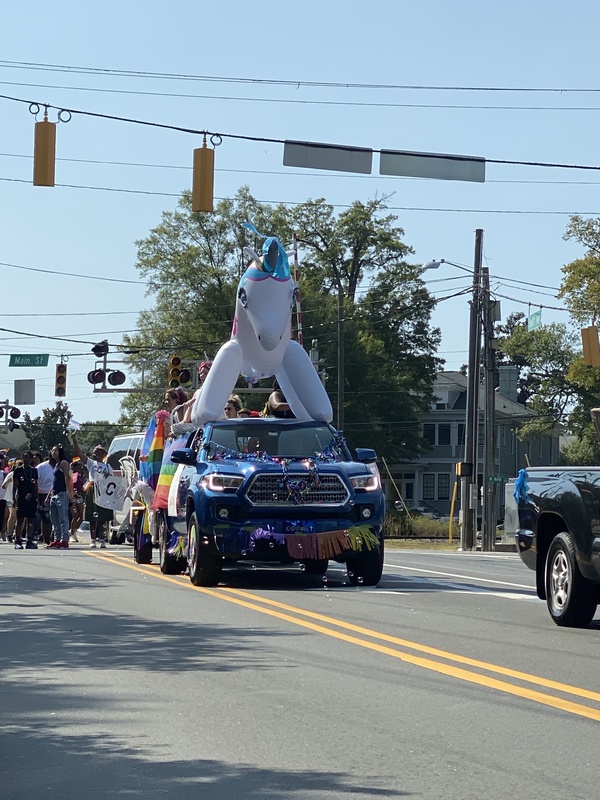
2019-09-13
My first time at a Pride parade was in 2019. The time at the pride parade made me super proud of who I am and that facet of my life. The photo I chose from the parade is that of the giant unicorn. I chose to use the unicorn photo because it truly represents LGBTQ+ people I feel because many people in my community consider themselves a unicorn which represents a mythological creature that is a myth and shows people view them as unique. The reason this picture represents Covid-19 is that for the past two years the Pride Parade in Durham, North Carolina has been canceled. It has bummed me out not being able to go to the Pride parade because having a new excitement for my community made me sad that I could not continue this. Also, I was looking forward to this event annually and making it a tradition.
-

2021-01-21
I wonder how local regions around Iran will react to this proclamation. Iran a country paranoid of America for legitimate reasons. How many other countries treat America with such a paranoid predisposition. The tragic answer to that question would be; we deserve it.
-
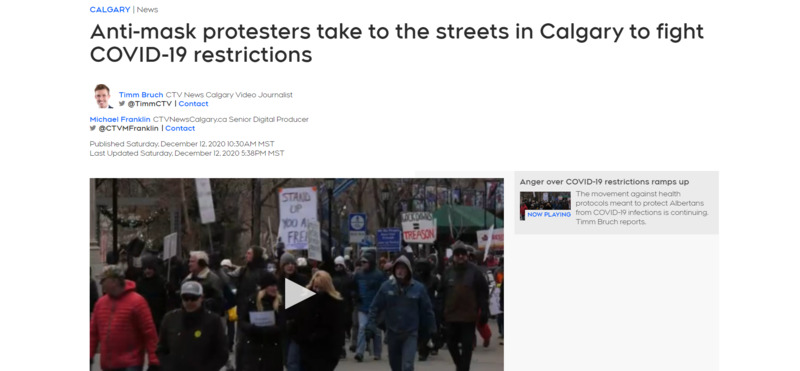
2020-12-12
This article details one of the numerous ‘freedom marches’ which took place in Calgary Alberta, Canada. These people were protesting in response to the government lockdowns, mask mandates and regulations to help limit the spread of Covid-19. However, what is interesting in this particular article is the reference to the multiplicity of causes behind each protestor; that protestors had different causes, and reasons for showing up. People marched for the obvious ‘anti-mask’ causes, yet others would protest for the ‘Wexit’ movement, which is the desire to establish either an independent Albertan ‘republic’ or join the U.S. as the 51st state. This item is important as it demonstrates how the pandemic sceptic movements of Calgary Alberta were viewed in a negative light; more importantly how these movements often co-opted other fringe movements such as the Albertan separatist movement. Similarly, the vitriol of these protestors is on display, as the Calgary freedom marchers have been notable for their behaviour of spitting, coughing and screaming at passersby, police and local businesses as evident in this particular story. Similarly, many believe these mask-less movements are super spreader events which are contributing to the spread of the virus in several urban centers throughout the province of Alberta, such as Calgary, Edmonton and Red Deer. This article provides substance to the pandemic sceptics of Alberta, Canada as no different to the anti-maskers of the United States; as uploading this, many of the organizations who attended and organized these events are currently organizing a massive march throughout the province which has been marketed to appear alike the tiki-torch rally of the far right in Charlottesville in 2017. I believe this article would fit best in the social justice collection to demonstrate the public/media response to the pandemic sceptics marching in the streets of Albertan cities.
-
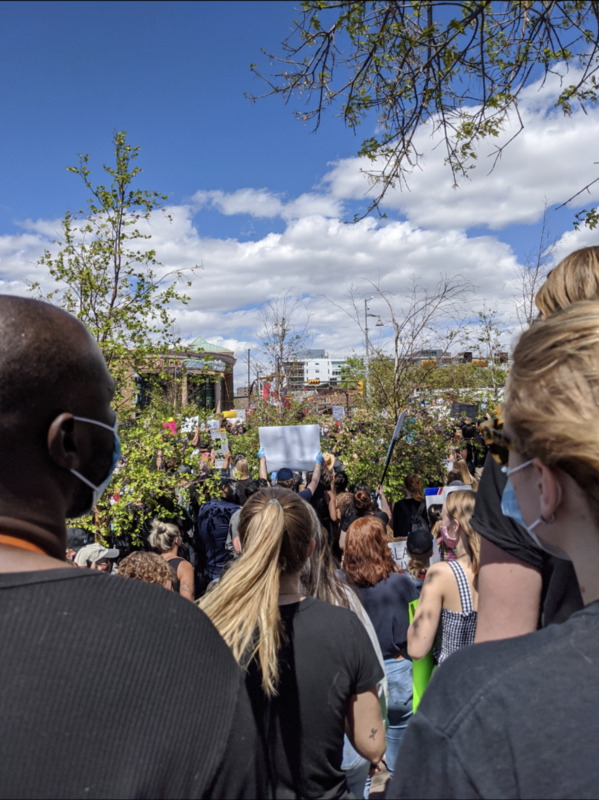
2020-06-03
This is a photo I took during one of Calgary’s Black Lives Matter marches in the Summer of 2020. In the wake of the murder of George Floyd, people took to the streets all over the world, not just America – In Calgary Alberta in particular, the death of George Floyd forced Canadians to critically look at our own law enforcement and state institutions, which were borne out of Canada’s colonial past. Not pictured in this photo would be the flags of numerous Indigenous nations, in particular the Mohawk nation – as in Canada and in America, the Black Lives Matter Movement synthesized itself with the cause of Indigenous sovereignty, as a means to combat white supremacy. During these marches, people who were antagonistic of the BLM movement stated that these marches were a threat to ‘public health’ as they believed protestors were marching mask less, this is not the case as evident in this photo. Organizers and random protestors were handing out masks, hand sanitization stations were set up with food, water and wipes. Signs were provided from the organizers to each marcher, if one did not bring their own. During this event, there was limited police presence as they maintained their distance from the large body of protestors which covered several streets. From what I recall what happened, I went with my friend Quinn, we showed up and found a place in the large crowd and listened to several speakers in the center of body of protestors (You can’t see it in this photo but it is directly center, behind the foliage). After the several speeches which took place, the organizers lead the people through a march downtown, to city hall. To my knowledge, there weren’t any instances of violence or confrontations with police – however I do remember there would be some agitators who would appear every now and then to yell at the protestors, or carry racist signs – I didn’t see this in particular, but saw photos of people doing so.
This photograph would be beneficial to the social justice collection as it depicts the black lives matter movement of Calgary Alberta, Canada as fore mostly a window into the unique Canadian experience and similarly to how protests were conducted during a pandemic.
-
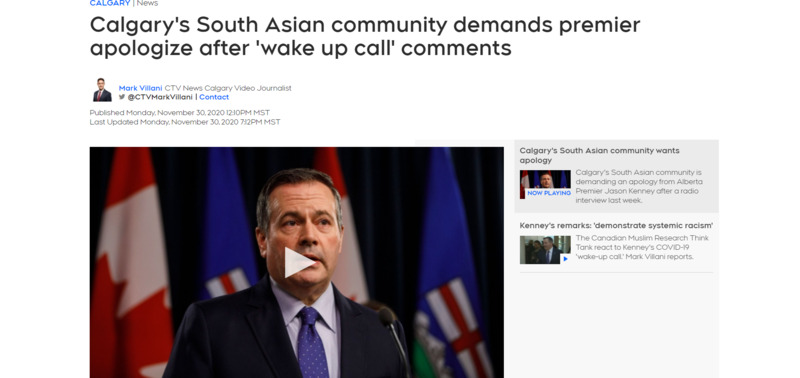
2020-11-30
This article was made in response to comments made by the premier of Alberta, Jason Kenny towards the South Asian community of Calgary. In particular, Kenny had attributed the social gatherings and “tradition” of the South Asian community being the cause for a spike in Covid cases throughout the province. His comments were viewed as an extension of rising anti-Asian racism throughout the province, which can largely be attributed to the rhetoric of U.S. president Donald Trump as a means to escape liability for mismanaging the pandemic response. The community he blamed in particular is traditionally working class, who are employed in much of the city’s service and logistical jobs which are essential to the province as a whole. From food vendors, taxi drivers, cleaners, city employees – the frontline workers, those who are exposed most to the virus. Even more so, Jason Kenny’s comments caused further anger as he was somehow unable to assign the same blame to the swaths of mask-less protestors who marched in large groups throughout the province in defiance of government mandates in the following week.
I believe this artifact would prove useful to the collection of Social Justice, mainly it is another Canadian experience based in the growing racialization/politicization of the covid-19 pandemic, and the ways in which conservative governments have attempted to scape-goat their own failings onto vulnerable communities. As throughout the pandemic, especially in the Western World, there has been an unnerving attempt to racialize the pandemic. Such as placing the blame on Chinese people, then Asian people as a whole; similarly this extends to working-class communities who man the frontlines to keep society functioning as normal. These communities (in regards to Calgary) are primarily composed of new immigrants who were not born in Canada, by Jason Kenny blaming these people for the upsurge in cases, he is exemplifying a racist generalization towards the entirety of the South Asian community of Calgary. In regards to Canada, this item matters to display that our pandemic experience was no different in that it illustrated the stark racial divides throughout the province, once compared to the primarily white ‘freedom’ marchers (who were also in the company of fascist/white-supremacist organizations such as the Proud Boys, Sons of Odin) walked proudly through our cities mask-less with little to no government comments as similar to Kenny’s on the SA community.
I want to add these to the collection of Social Justice, as articles like these were first spurned on by anti-racist activists who initially heard Kenny’s remarks. What followed shortly after was a provincial outcry directed towards the premier for his questionable history in regards to racism. Situations like these prove that there is systemic racism at work within the government of Alberta, as the government racialized the issue of Covid-19, while looking away from the predominantly white mask less marchers.
-

2020-05-20
I will always remember the feeling of my dog Gia's soft fur and the tickle and wetness of her silky tongue licking my hand during this pandemic. These sensory experiences soothed me during a stressful and anxiety-ridden time during the COVID pandemic.
When the pandemic worsened in March 2020 and the state of Utah went into a full lockdown, my family's life changed suddenly. My son's birthday party was canceled. My children began school online. My husband no longer found himself flying to New York or Los Angeles, and I found myself filled with worry and anxiety. How will my elderly parents weather this pandemic? Will I get them sick? Will I be responsible for their deaths? Will my 9-year-old son become depressed because he can no longer play hockey or football? How will my 13-year-old handle feeling emotionally isolated because she can no longer hang out with her friends? All of these worries plagued my mind and made my body stiff, my neck sore, my mood heavy with stress.
My family soon found ourselves in a new routine. We spent more quality time together since we were no longer rushing to get to activities. There was more time for dinner and meaningful conversation. However, there was still a heaviness, and everything seemed to be wrapped in a layer of anxiety.
An unexpected text from my sister-in-law (who is an animal control officer) changed our lives. A darling 3-year-old black and white miniature poodle had just been dropped off at the shelter. Her elderly owner had died of COVID-19, and this sweet dog needed a home. After a quick family meeting, it was unanimous; we wanted the dog!
Gia immediately became more than a pet; she became a source of comfort and calm to me. With a sweet temperament, she always seemed to know when I was full of anxiety. Each night I would sit on the couch watching the nightly news, my body tight and sore, the rigidness seeping into my muscles that comes with prolonged stress.
Unaware at first that I was even doing it, I would reach for Gia, who would lay close to me, and begin stroking her fur. Often, her silky pink tongue would lick my hand, and the combination soothed and relaxed my body. Even as worry began to swirl in my mind, the questions continuing: when will it be our turn to catch this virus? Will I have lasting effects from it? Gia was there, her warm body lying beside mine, her soft fur between my fingers relaxing my body and easing my mind.
During this COVID-19 pandemic, I had read that almost all the rescue dogs had been adopted across the nation. I guess I was not the only person in need of emotional comfort during this isolating time. This pandemic has taken an emotional toll on everyone I know. I feel so grateful that Gia came into our lives during this pandemic. This sweet dog has become more than a pet. She has become an emotional support dog for my daughter when she is lonely and a physical companion for my son when he needs to run crazy through the house. Gia is there when my nerves are frazzled from worry about the pandemic. She gently lays her warm body next to mine, as if knowing I need her near me to ease my anxiety. I stroke her soft fur, close my eyes, and remind myself to BREATHE.
-

2021-01-22
I learn about myself through the stories of others; this account is both a recounting of my friend Stephanie’s story, a conversation we had after she contracted Covid19, and my own introspection about the different impact that written and spoken stories have.
 2021-01-06
2021-01-06 2020-12-23
2020-12-23 2020-01-01
2020-01-01 2020-12-17
2020-12-17 2021-01-24
2021-01-24 2020-08-28
2020-08-28 2020-12-23
2020-12-23 2021-01-24
2021-01-24 2020-08-09
2020-08-09 2021-01-24
2021-01-24 2021-01-24
2021-01-24 2021-01-23
2021-01-23 2021-01-24
2021-01-24 2020-12-09
2020-12-09 2020-12-15
2020-12-15 2020-12-18
2020-12-18 2020-05-29
2020-05-29 2021-01-20
2021-01-20 2021-01-24
2021-01-24 2021-01-18
2021-01-18 2021-01-20
2021-01-20 2021-01-23
2021-01-23 2021-01-23
2021-01-23 2021-01-22
2021-01-22 2021-01-24
2021-01-24 2021-01-24
2021-01-24 2021-01-24
2021-01-24 2021-01-24
2021-01-24 2021-01-24
2021-01-24 2021-01-24
2021-01-24 2021-01-18
2021-01-18 2021-01-21
2021-01-21 2021-01-22
2021-01-22 2021-01-09
2021-01-09 2020-01
2020-01 2021-01-23
2021-01-23 2019-09-13
2019-09-13 2021-01-21
2021-01-21 2020-12-12
2020-12-12 2020-06-03
2020-06-03 2020-11-30
2020-11-30 2020-05-20
2020-05-20 2021-01-22
2021-01-22